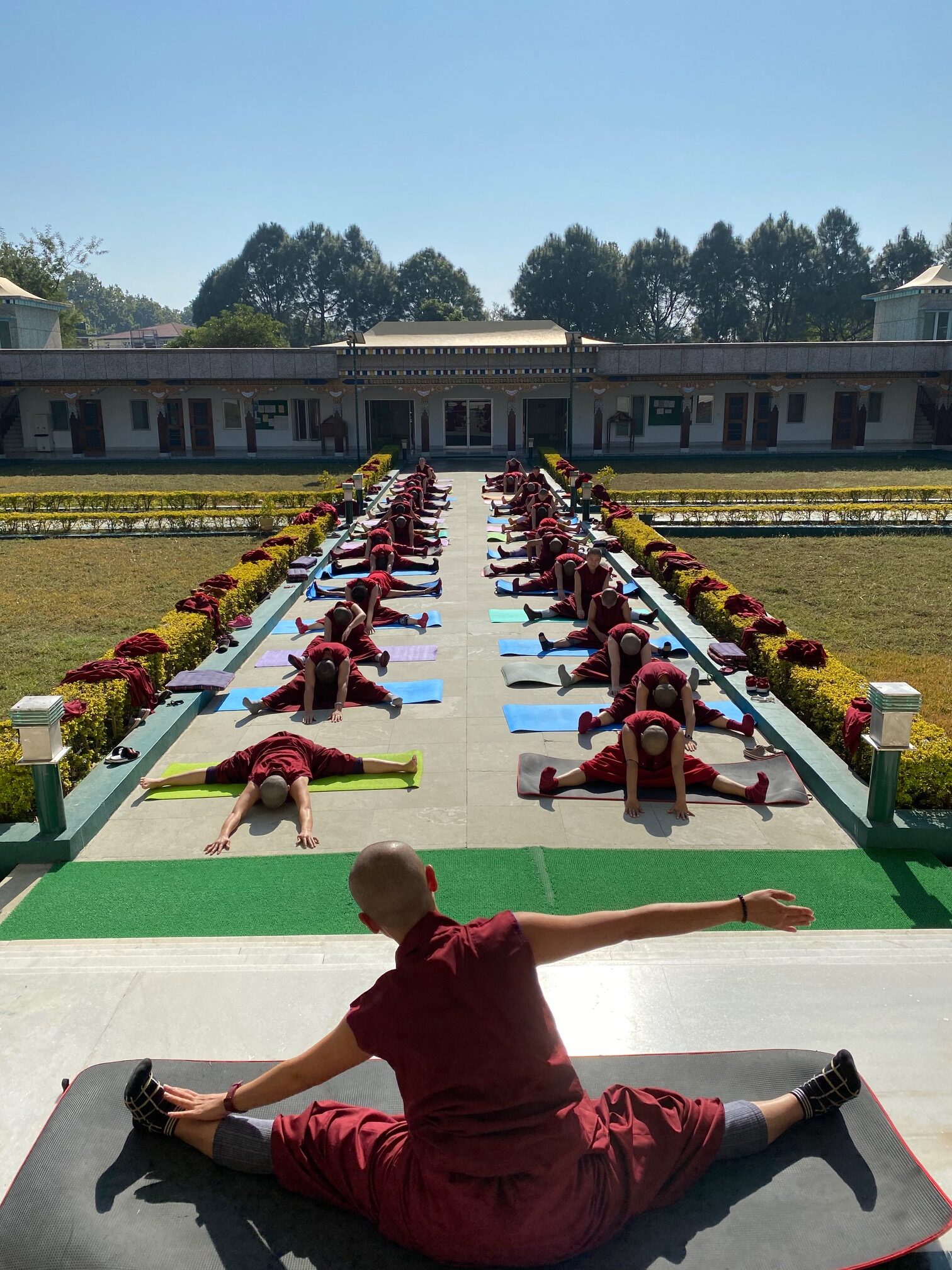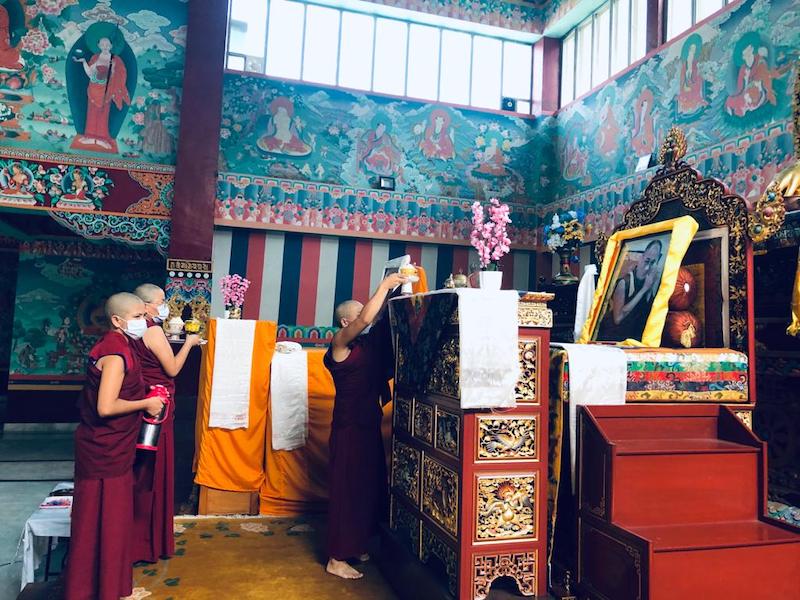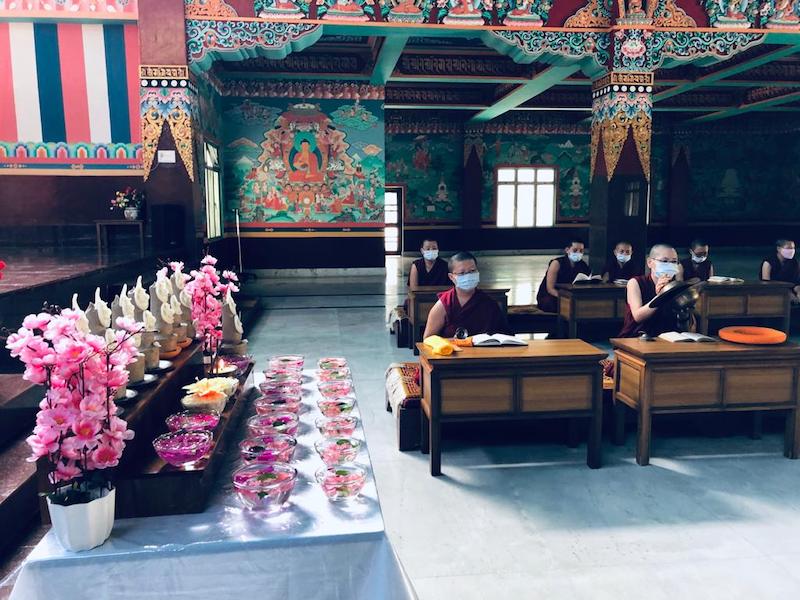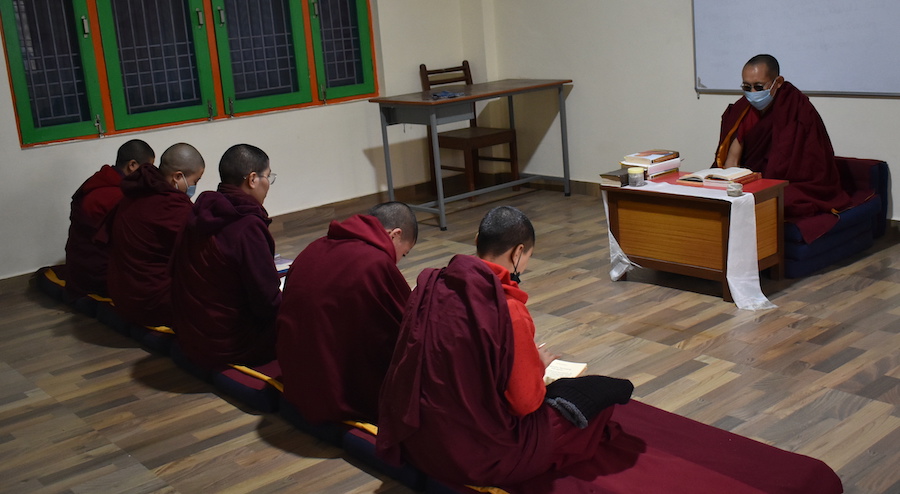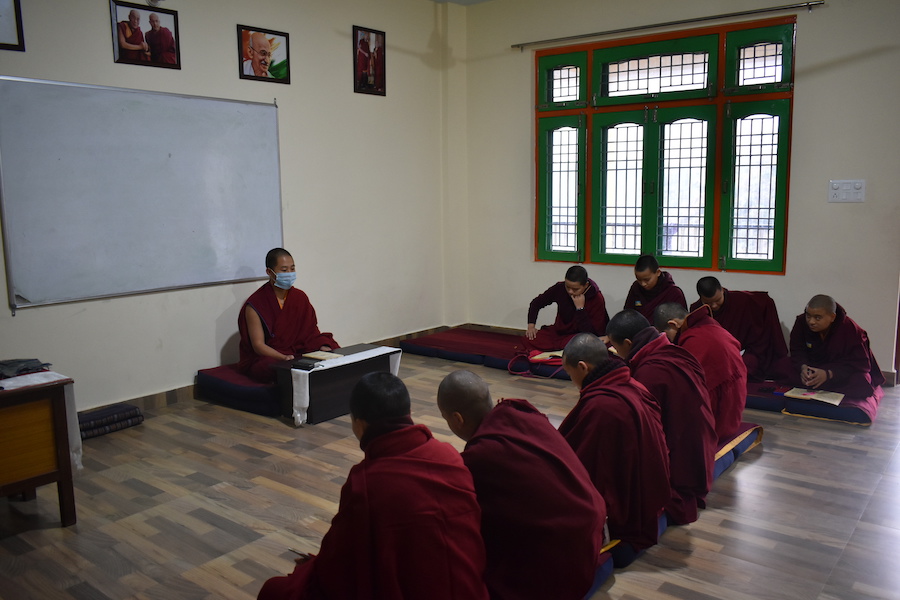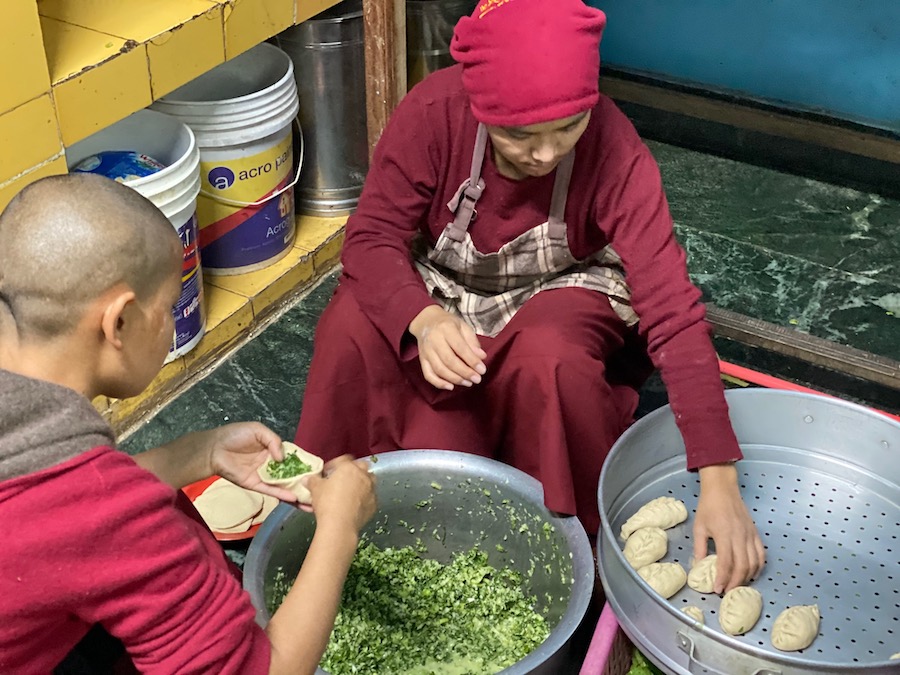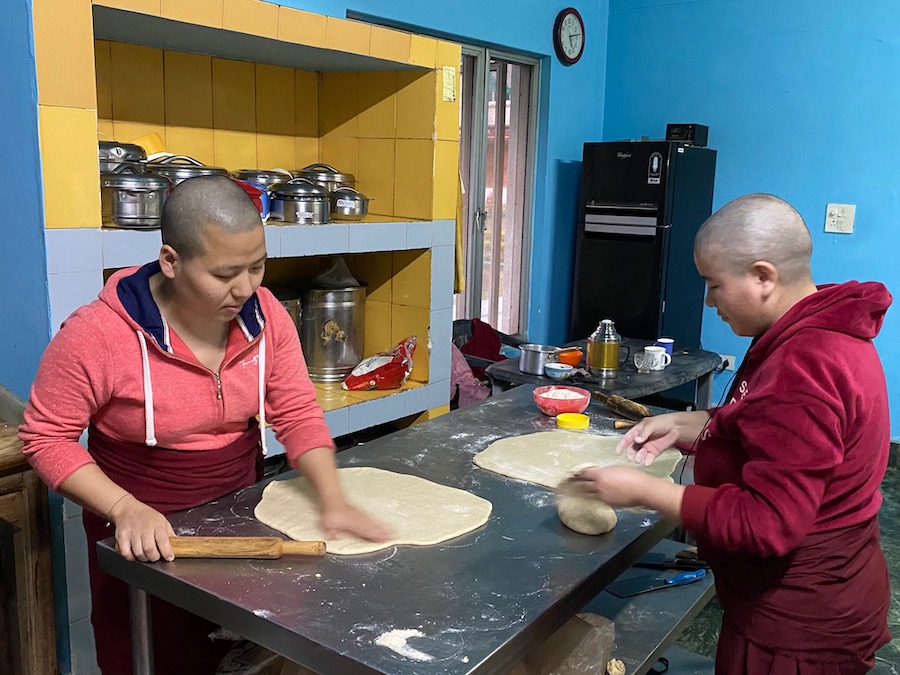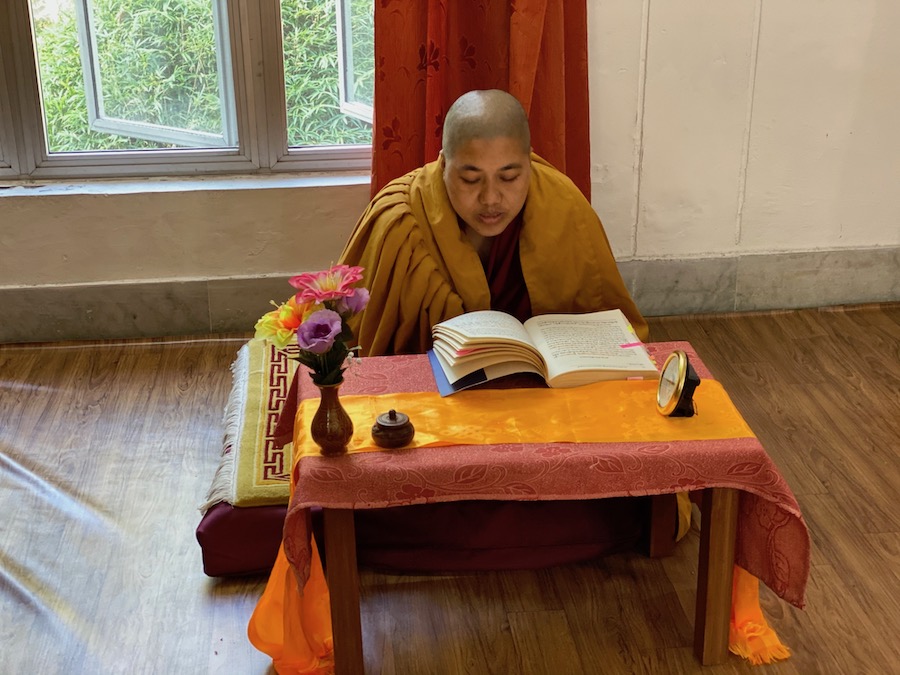A senior Tibetan Buddhist nun from Dolma Ling Nunnery and Institute has been selected for the Emory Tenzin Gyatso Science Scholars program. She is one of 7 monastics chosen to study science for two years at Emory University in Atlanta starting in September 2021.

A senior nun from Dolma Ling, Venerable Kelsang Lhamo (bottom right), has been selected as one of 3 nuns and four monks to study for two years at Emory University as part of the 6th cohort Tenzin Gyatso Science Scholars Program. She and the other 6 monastics are to start at Emory University in September 2021 following a preparation course in South India. Photo from Tenzin Gyatso Science Scholars Program.
Venerable Kelsang Lhamo was one of three nuns from Dolma Ling who applied for the program and sat qualifying exams. She has finished her studies at the nunnery and opted not to pursue a Geshema degree.
Born in 1988 in McLeod Ganj in upper Dharamsala, Venerable Kelsang Lhamo was studied at the Tibetan Children’s Village School in Choglamsar, Ladakh before becoming a nun at Dolma Ling.
The Tenzin Gyatso Science Scholars Program is part of the Emory-Tibet Science initiative started in 2010 to support monastic science education. Over the past 10 years, 30 monastic scholars have completed the program and returned to serve their monastic institutions.
On March 16th, the newly selected science scholars began intensive training in math, science, English, and computer skills at Drepung Losel Ling Meditation and Science Center in South India. This course aims to prepare the scholars with the knowledge they need in advance of their two-year residency program at Emory University.
The three nuns and four monks will join the university in the fall of 2021 and focus on deepening their understanding of the basic sciences.
Training Monastic Science Leaders
The Tenzin Gyatso Science Scholars Program is designed to develop and nurture Tibetan monastic science teachers by providing college-level science education at Emory University in Atlanta, Georgia.
The aim is to ensure the long-term sustainability of science education within Tibetan monasteries and nunneries in India. The scholars program, named after His Holiness the Dalai Lama, is supported by the Dalai Lama Foundation and Emory University. The program is part of the wider Emory-Tibet Science Initiative.

Tibetan Buddhist nuns taking part in the Emory-Tibet Science Initiative in 2019. Photo from the Emory-Tibet Science Initiative Facebook page.
As The New York Times wrote in 2013, a big challenge in teaching science is the lack of a Tibetan lexicon for many scientific terms. “How does one create new words for concepts like photosynthesis and clones, which have no equivalent in the Tibetan language or culture? How does one begin to name thousands of molecules and chemical compounds? And what of words like process, which have several levels of meaning for Tibetans?” Over recent years, thousands of new scientific terms have been added to the Tibetan language.
The ultimate goal of the Emory-Tibet Science Initiative is to build a bridge between two complementary systems of knowledge by educating future scientific collaborators who can contribute to new discoveries in the science of mind and body. The program is designed to give Tibetan monastics new tools for understanding the world, while also providing them with fresh perspectives on how to employ and adapt time-tested, Buddhist, contemplative methodologies for the relief of suffering in the contemporary world. Additionally, scientists and science educators are encouraged to learn more about the Buddhist science of mind and what it can contribute to the understanding of human emotions, the nature of consciousness, and integrative approaches to health and well-being.
The scholars are primarily selected from Tibetan monastic institutions participating in the Emory-Tibet Science Initiative science education program. They represent all the major Tibetan Buddhist schools, including Tibet’s indigenous Bon religion.
Since the start of the program in 2010, five cohorts of 30 scholars have completed the program. The fifth group graduated from their 2-year residency program in May 2021.
Upon the completion, the monastics return to their institutions to take up leading roles in the science education programs such as teaching science classes, serving as liaisons between Emory and their home institutions, and coordinating logistics for the annual summer intensives science courses that are part of the Emory-Tibet Science Initiative.
In addition, the scholars participate in Buddhism and science dialogues and seminars, collaborate on research projects with scientists, and give presentations on various scientific topics.
Tibetan Buddhist Nuns and Science
Since 2014, nuns from Dolma Ling have taken part in the Emory-Tibet Science Initiative, a four-week program held at Drepung Loseling Monastery in South India. During the course, Tibetan nuns and monks are taught the philosophy of science, physics, neuroscience, and biology. The course is presented by faculty members from Emory and other distinguished universities with assistance from the Tenzin Gyatso Science Scholars.

Nuns presenting science posters at a Dolma Ling science fair in 2019.
The nuns and monks attend classes for six hours a day and are tested on the last day of each course. Classes consist of lectures, discussions, demonstrations, and hands-on experiments. In 2018, eight nuns from Dolma Ling attended.
In 2017, in collaboration with the Department of Religion and Culture of the Central Tibetan Administration in Dharamsala and the Library of Tibetan Works and Archives, the Emory-Tibet Science Initiative initiated a 6-year science program for nuns from five major nunneries in India.
The first nuns selected as Tenzin Gyatso Science Scholars were two nuns from Jangchub Choeling Nunnery in Mundgod, South India. They were part of the 4th cohort of scholars to study science at Emory University and they completed their residency there in 2019. Both served as translators for the summer program of the Emory-Tibet Science Initiative held at Drepung Loseling Monastery in 2019.







































